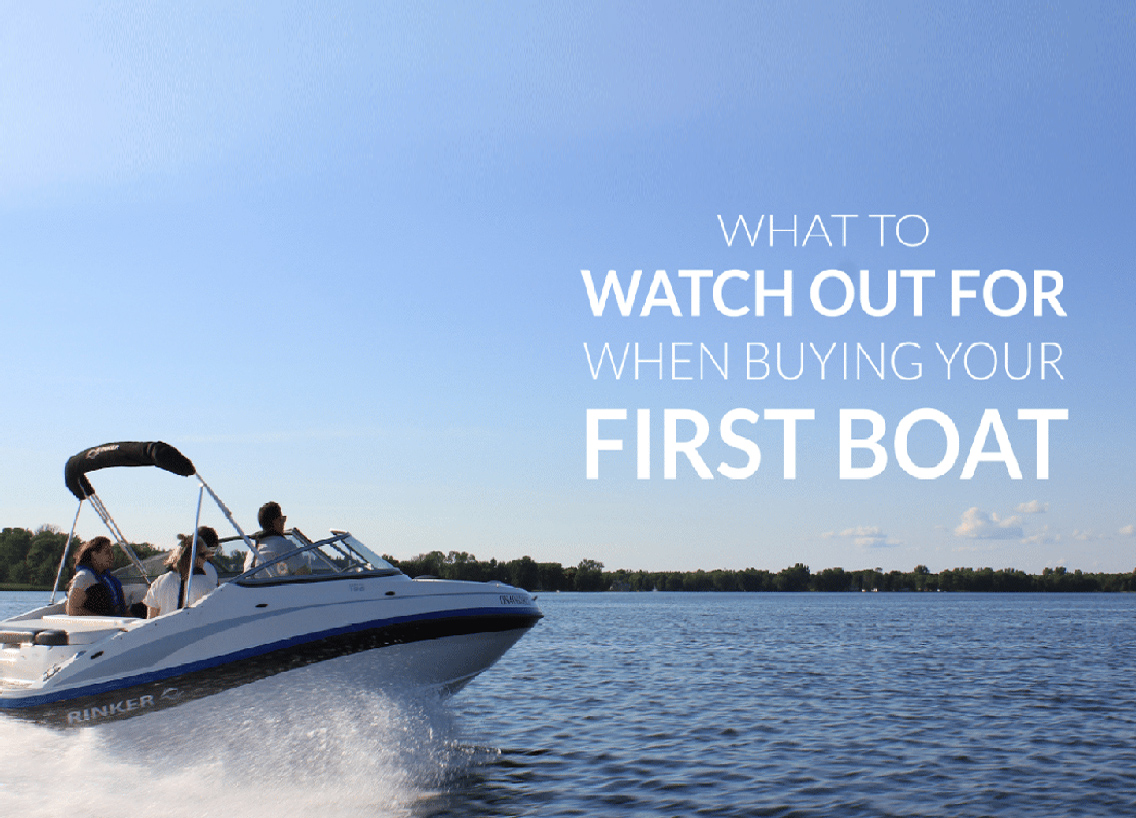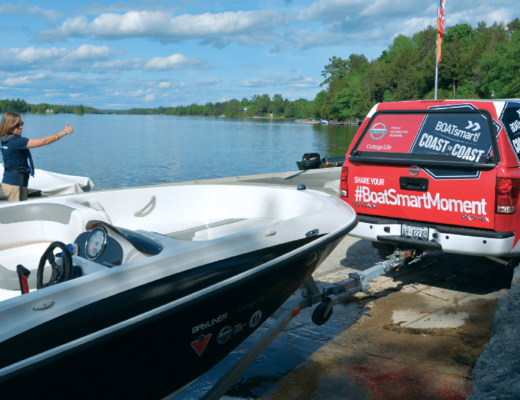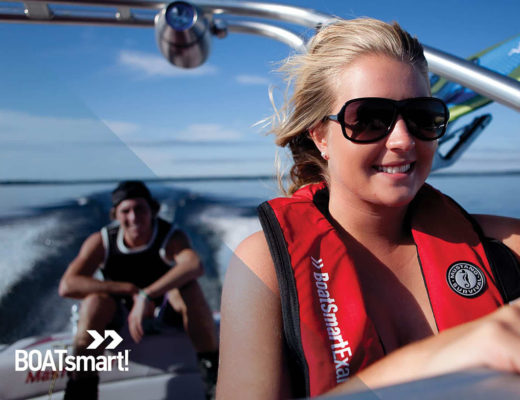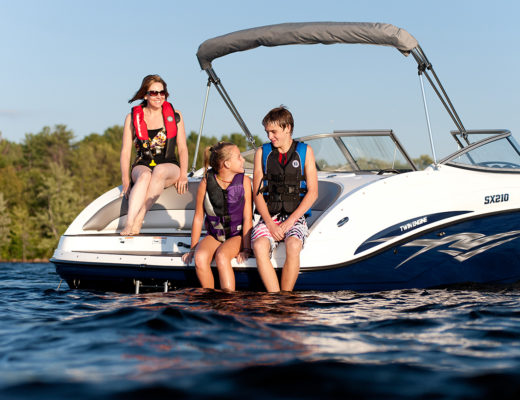New or used? How much horsepower? Will your family really use it?
While on the lookout for your first boat, you’re bound to have questions.
We can’t answer them all in one post, but this is a good place to start. Here are some key things to watch out for as a first-time buyer.

Choose a Boat Type
Your first step is to choose what type of boat to buy based on how you plan to use it.
Don’t be fooled into buying something bigger or more decked-out than you really need — you’ll end up going outside your budget and dealing with unnecessary maintenance and hassle down the line.
Select your boat based on the activities you’ll be using it for (tubing, fishing, wakeboarding or wake surfing, just cruising, or full-family outings?), your realistic budget (factoring in gas and maintenance costs), and how you plan to store it if it won’t be used year-round (water, driveway, or garage?).
Consider Used Versus New
The age-old debate of used versus new is especially important in boats. You’ll have a very different experience and an entirely new set of red flags to watch out for, depending on which one you choose.
Used boats should have some mileage (called “hours” for a boat) to show it’s been used and cared for, but not so much that its lifespan is affected. About 100-300 hours per year is a safe range.
New boats should be bought through trusted channels and dealerships to ensure it’s not an online scam or a too-good-to-be-true price that indicates underlying issues. And that’s just the beginning!
There are a host of other red flags to watch for in both categories. Do your research on both and weigh your options before you buy.
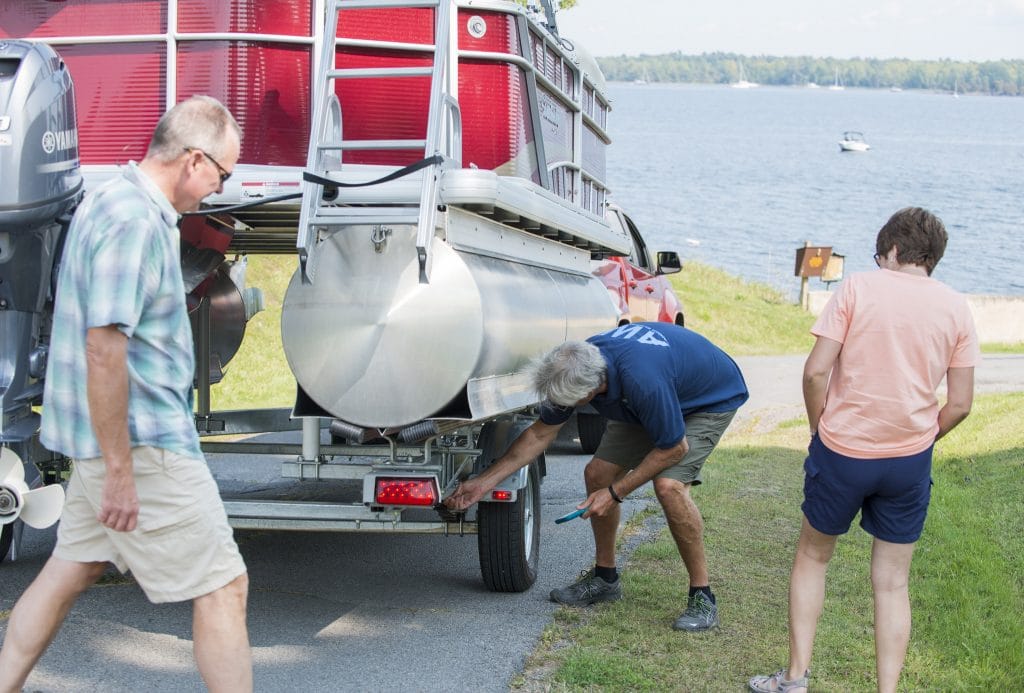
Photo by Jake Sporn
Inspect and Test
We recommend paying to have the boat looked at by a professional or two, especially if you’re buying a used boat or a vessel over 30 feet long.
Instead of trying to become an expert overnight, you can save yourself a massive headache later on by investing in inspections from a mechanic and a surveyor before you buy. Regardless, don’t buy any boat without first taking a “sea trial,” in which you get to drive the boat from start to finish and make sure it’s fully operable.
Since half the boat is underwater, make sure also to inspect it on land with a complete walkaround, even if this means having it hauled to do so. You should keep an eye out for (and avoid) an uneven gel coat, poorly secured cleats, fiberglass poking out of joints, or obstructed visibility from the driver’s seat. Tap a coin against the hull and deck to listen for hollow spots.
Then, take a look at the engine for neat, colour-coded or labelled wiring and make sure it’s possible to check engine and transmission oil levels easily.
Are There Any Extras or Deals?
Some dealerships or independent sellers may offer package deals. Make sure it is a genuinely better deal by comparing the extra features in the package and calculating the difference between the items you would have to purchase separately anyway.
Consider other perks that come with your purchase but may not be tangible. For example, a boat purchased from a dealership with a mechanic may be prioritized later when you bring it back to the same place for maintenance, putting you at the front of the line every time.
Shop Around
Once you’ve found some listings, compare them to see what’s detailed in each. By carefully combing out the information left out of certain listings, you can determine if the seller is hiding a defective or broken feature.
Although these are important to know about, don’t let every flaw deter you from finding your dream boat. Deals come and go quickly, and you can miss out on a great boat that suits your needs while searching for total perfection.
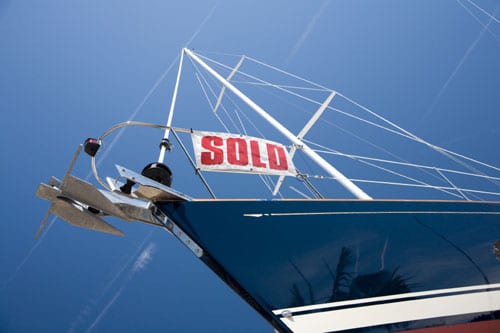
Trust Your Gut!
Every seasoned boat buyer will have their own set of red flags to watch out for based on personal experience. Take each nugget of advice with a grain of salt as you remember their experience isn’t necessarily the norm.
Instead of adding to the pile, we’ll leave it here with a few last words: shop around, bring an experienced friend or professional, and above all, trust your gut!
Get Your Boating License After Buying Your First Boat
Buying your first boat is an exciting adventure! We hope these tips help you avoid a lemon and lead you to the perfect vessel for yourself or you and your family for many water excursions to come.
Before you take your new boat out for the first time, make sure you have your boating license. In the U.S. and Canada, boaters must take a boating education course, pass an exam, and get a license to boat legally. Plus, having the knowledge from a course through BOATsmart! is simply the safest way to navigate the waters!
If you’re buying a boat and boating in Canada, you’ll need our Canada-approved course. In the U.S., choose the course for your state and start learning!
Content most recently reviewed and updated August 9, 2024.
